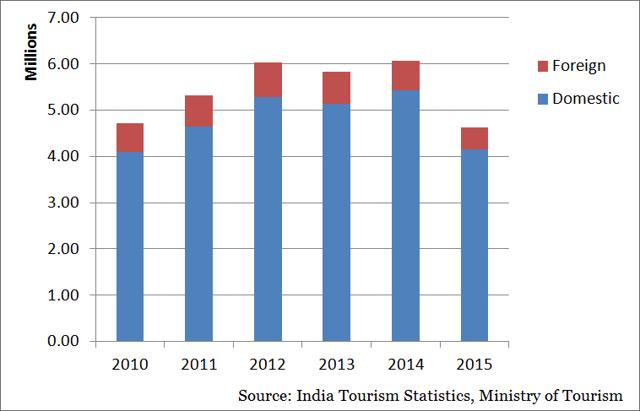Why the 40,000 cap on daily ticket sales at Taj Mahal may be a bad idea
The move is intended to ensure that incidents such as last Thursday’s stampede, which left five people injured, do not happen again.
The Archaeological Survey of India (ASI) is likely to restrict the number of tourists visiting the Taj Mahal to 40,000 every day, and also place a three-hour cap on each ticket-holder.

The move is intended to ensure that incidents such as last week’s stampede do not happen again at the monument, the Indian Express quoted Union culture minister Mahesh Sharma as saying. However, an elementary statistical analysis shows that the daily ticket sale cap might actually be counter-productive to better crowd management.
Statistics published by the ministry of tourism show that 4-6 million tourists visited the Taj Mahal every year between 2010 and 2015. We do not have the figures for 2016 and 2017 yet.
A PTI story carried by the Hindustan Times states that the number of visitors to the monument during peak tourist season and other occasions crosses 60,000-70,000 daily. According to the Taj Mahal’s official website, most tourist visits happen in the cooler months of October, November and February.

Let us assume that there were at least 50 days (spread over tourist seasons and major holidays) in 2015 when the number of daily visitors at the Taj Mahal crossed 60,000. This means that these 50 days would account for 3 million out of the total 4.62 million visitors in 2015. As the monument is closed for public viewing on Fridays, there were zero visitors on 52 days a year. So, the additional 1.62 million visitors in 2015 must have visited the monument during the remaining 263 days of the year. The average number of daily visitors in this period comes up to around 6,200.
These statistics highlight the problem with the idea of placing a daily cap on the number of ticket sales at the Taj Mahal. While the policy is unnecessary for a major part of the year, it would create a huge rush for tickets on peak days. Tourists would be likely to line up in the early hours of the peak season to make sure that they get entry before the daily cap is breached. This is bound to create discomfort for tourists during the peak season.
The policy could also have another fall-out. Our assumption of 60,000 daily visitors for 50 days also shows that a 40,000 cap could lead to the Taj Mahal losing a million annual visitors. This would have an adverse impact on ASI revenues.
If the number of days the 60,000 limit is breached is significantly less than 50, deployment of additional human resources for crowd control would be a much better option than rationing tickets.





